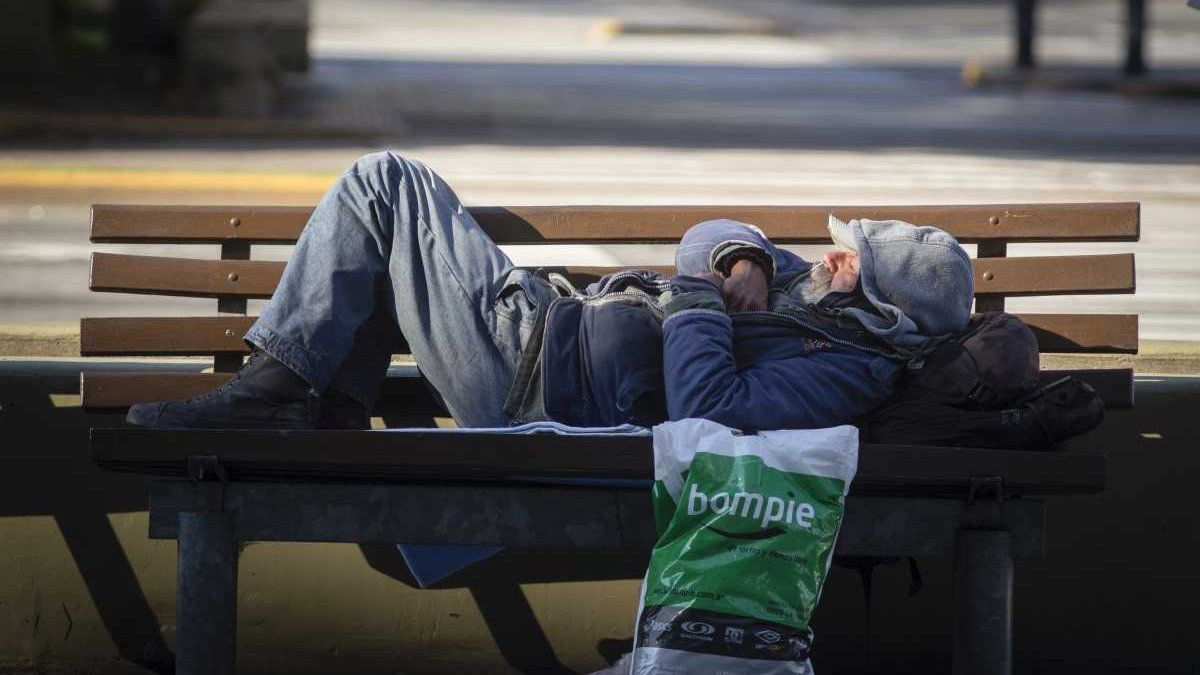This implies that, for the universe of the 31 urban agglomerations of the Permanent Household Survey (EPH), Below the poverty line there are 2,684,779 households, which include 10,643,749 people; and, within this set, 660,494 households are below the LI, which represents 2,568,671 indigent people.
Regarding the second half of 2021, the incidence of poverty registered a reduction of 0.2 percentage points (pp) in households and 0.8 pp in individuals. In the case of homelessness, showed an increase of 0.7 pp in households and 0.6 pp in individuals.
poverty indec.PNG
“Poverty fell compared to the first half of last year in a post-covid context and with the effects of having had a 10% rise in GDP. Compared to the second semester of last year, poverty almost did not change and this was concentrated in the urban centers of the interior. In the suburbs the fall is less and also increased poverty“, said to Agustín Salvia Areadirector of the Social Debt Observatory of the Argentine Catholic University (UCA).
In that sense, he added: “For the segments in which poverty was reduced, they actually did so in the fourth quarter of last year and maintained it in the first quarter of this year. The factor was the middle class, which has recovered a certain advantageous position. but who are still vulnerable to poverty. They are the blue-collar workers who are accompanying the paritarias. Also self-employed and professionals who recovered income.”
For Salvia, it is important to highlight that the result of the INDEC has two parts: “a positive first quarter that had the effects of the post-electoral bubble and a second quarter that is already showing an increase.”
“It is estimated that poverty for the second quarter would be around 38% and indigence above 10%“, warned the specialist to this medium.
To its turn, Nicholas Pertierraan economist at the Scalabrini Ortiz Study Center (CESO) told Ámbito that the INDEC data has two points to analyze: how average income and income distribution evolve.
“Compared to the first half of last year, the reduction in poverty is significant. We start from very high indicators because last year we were in a strong pandemic context. There is a recovery for both reasons. Very slight, attenuated by the costs of the food basket, but the income was able to beat him in the first part of the year. Income distribution also improved slightly. This can also be explained by the transfer programs such as Enhance Work and Food Card“, he explained.
INDEC highlighted that at the regional level a reduction in poverty was observed in most of the regions. Homelessness increased in three regions and decreased in the other three, the agency detailed.
“Given that the incidence of poverty and indigence result from the ability of households to access the basic food basket (CBA) and the total basic basket (CBT) through their monetary income, it was observed that, with respect to the previous semester , on average, the total family income increased by 29.1% and the average regional baskets increased by 33.8% (CBA) and 29.0% (CBT)”, highlighted INDEC.
“That is, income in the period studied increased to a level similar to the CBT, which led to a reduction in the poverty rate; and less than the CBA, which explains the increase in the indigence rate of the population as a whole in the average of the semester“, he detailed.
poverty graph indec.PNG

In another order, the official statistics body highlighted that taking into account that the poverty gap is the distance between the income and the baskets of poor households, it was observed that the poverty gap of households was located at 37, two%.
In this sense, he indicated that the average total family income of poor households was $58,472, while the average CBT of the same group of households reached $93,177.
“The distance between the income of poor households and the CBT increased slightly compared to the second half of 2021,” observed INDEC.
Poverty by age and region
Regarding the age groups according to poverty status, the INDEC highlighted that slightly more than half (50.9%) of people aged 0 to 14 are poor.
While the total percentage of poor for the groups from 15 to 29 years old and from 30 to 64 years old is 43.3% and 32%, respectively. Meanwhile, in the population aged 65 and over, 12.1% were below the poverty line.
Likewise, the body led by Marco Lavagna reported that the highest incidences of poverty in people were observed in the Greater Buenos Aires (GBA) and Cuyo regions, 37% each; and Northeast (NEA), 36.7%.
While the minors, on the other hand, were registered in the Patagonia regions, 31.4%; and Northwest (NOA), 36%
He also pointed out that both in agglomerates with 500,000 and more inhabitants and in those with less than 500,000, a reduction in poverty of 0.2 percentage points was observed compared to the second half of 2021.
It should be remembered that the Poverty Index and the Indigence Index are made up of a comparison of the cost of the Total Basic Basket (CBT), in the first case, and of the Food Basket (CBA), in the second, compared to the income received by a person or a family group.
The CBT that sets the threshold below which the poverty line falls increased 36.9% in the first half of the year to reach $104,216 in June, for a couple with two children aged 6 and 8. While the CBA, below which falls into indigence, increased 41.1% in the first semester to reach $45,529 million.
in returnthe Salary Index rose 34.3% in the first semester, below the evolution of the CBT and the CBA, but with a difference within income, since private workers had an increase of 36%; public employees, 35.2%, but the unregistered, who are 37% of the total number of employees, 27.9%.
If the comparison is made with the last 12 months, when the Poverty Index was 40.6% and the Indigence Index 10.7%, the CBT increased by 56.7% and the CBA by 63.7%.
Then, The Salary Index rose 67.7%, but with increases of 68.3% in the salaries of private workers, 72.6% in those of public employees, but only 58% in the “unregistered.
Between the second quarter of this year and the same period last year, the Unemployment Index fell to 6.9% from 9.6% with a growth of 6.5% in the economy, and inflation of 64% in 12 months .
Source: Ambito
David William is a talented author who has made a name for himself in the world of writing. He is a professional author who writes on a wide range of topics, from general interest to opinion news. David is currently working as a writer at 24 hours worlds where he brings his unique perspective and in-depth research to his articles, making them both informative and engaging.




